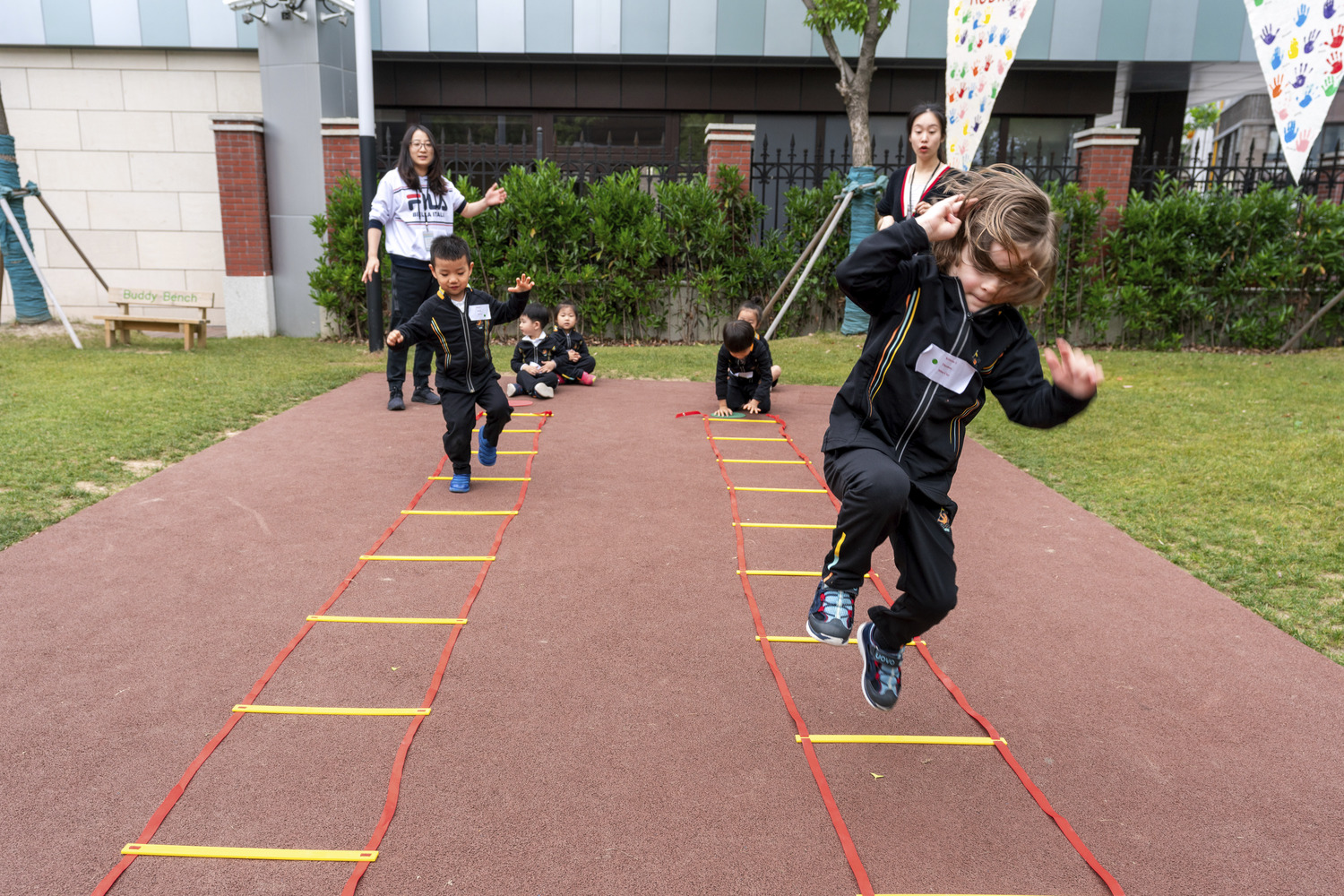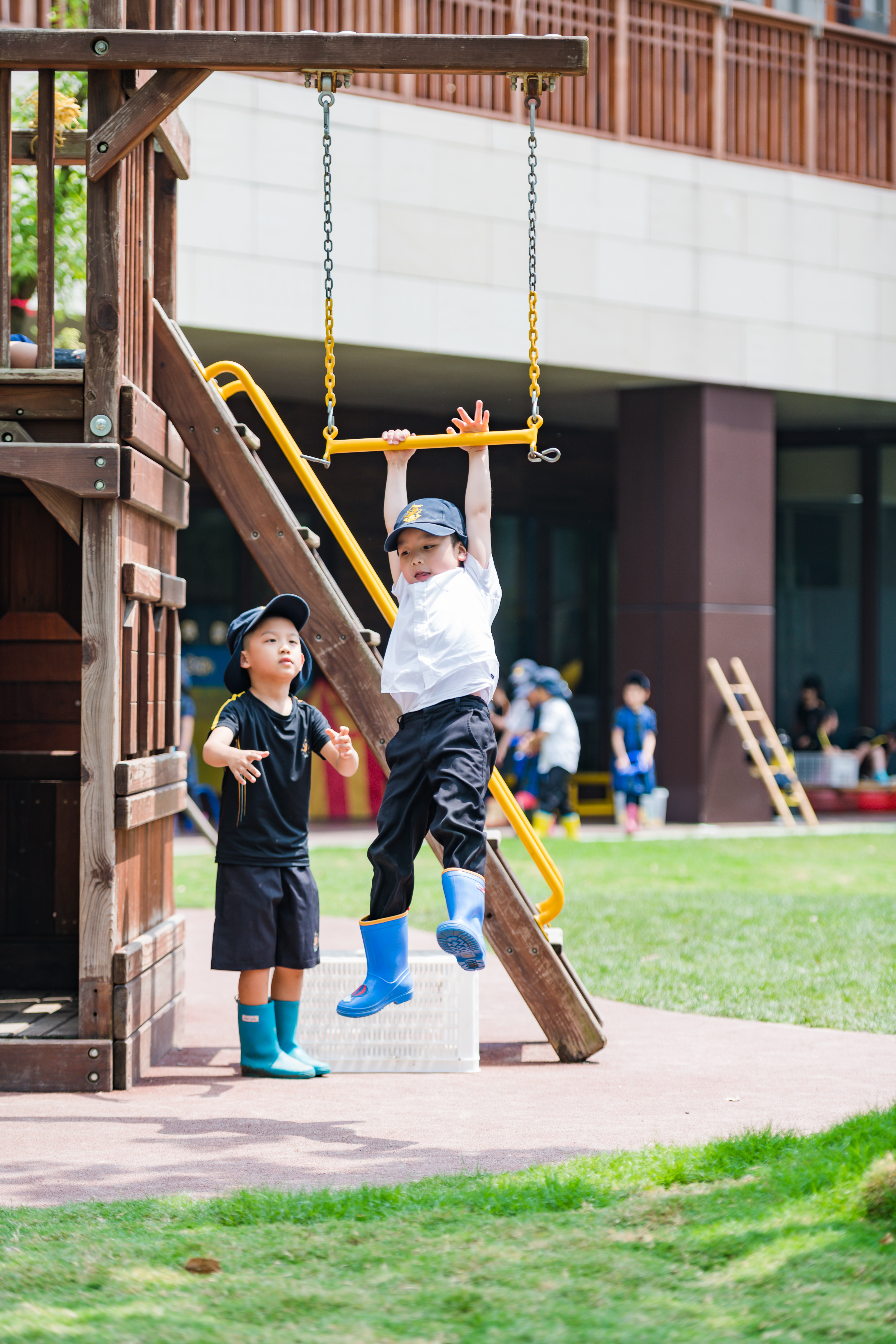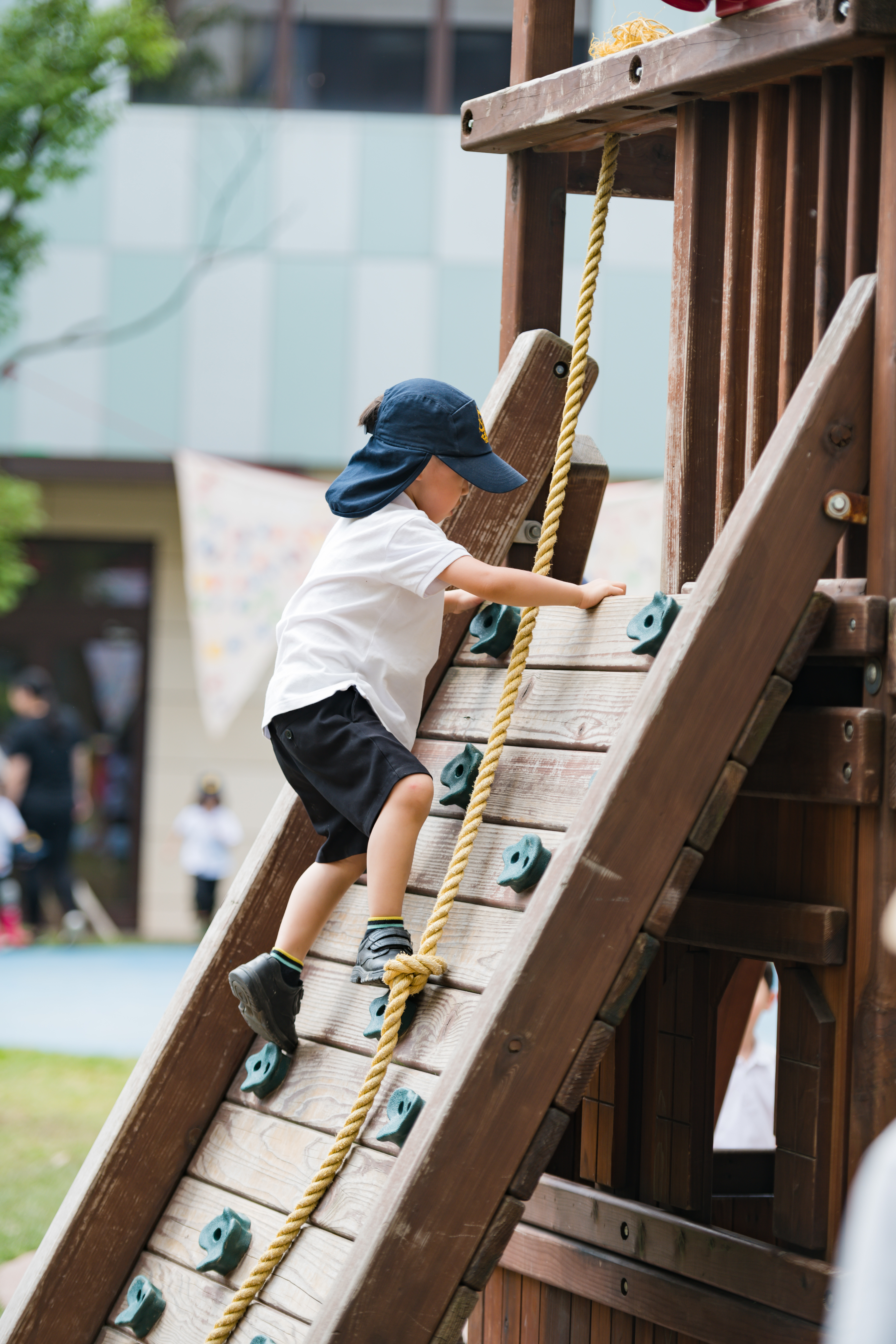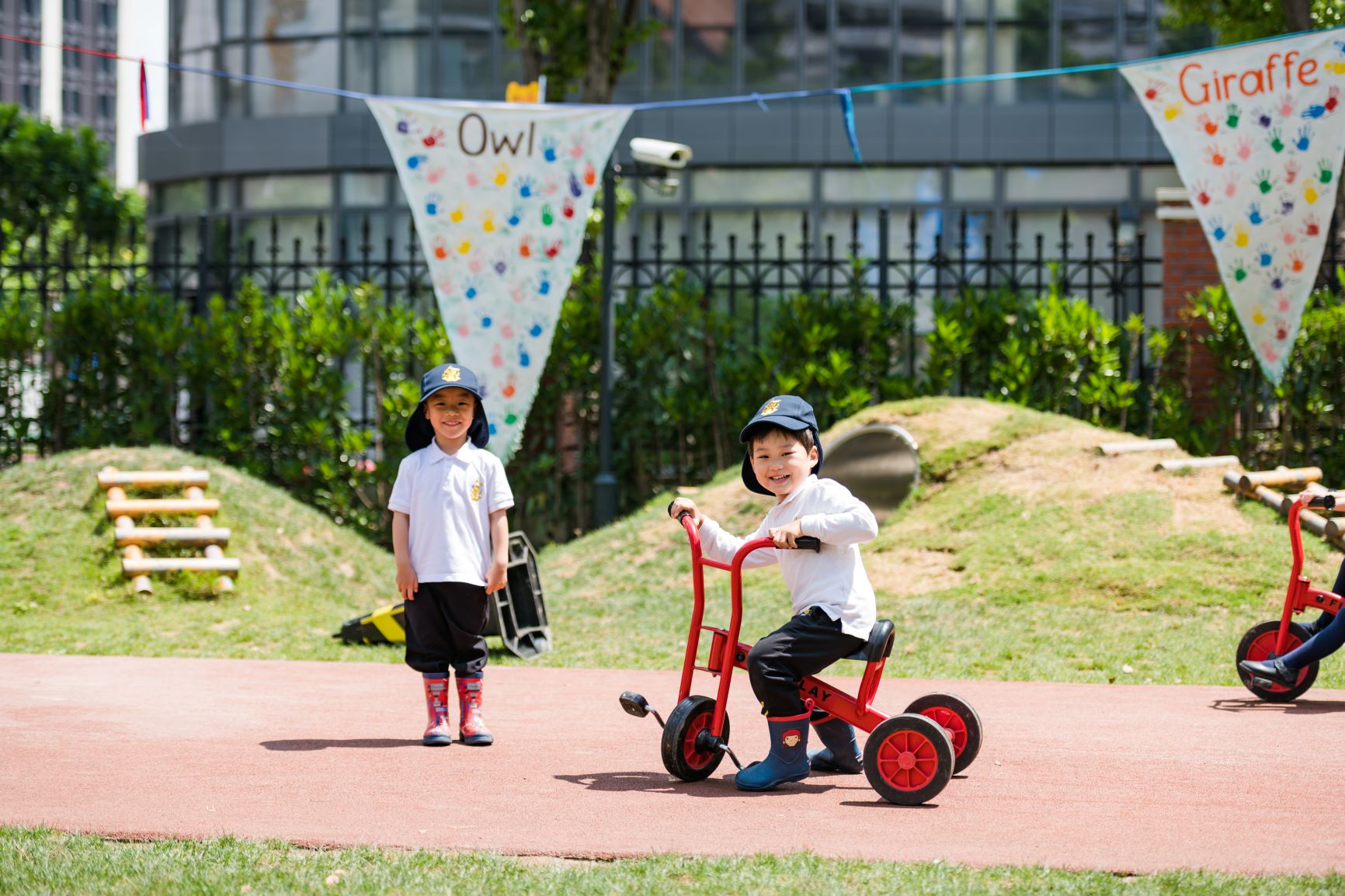
‘A moving child is a learning child’—Gill Connell & Cheryl McCarthy
I love this quote; this quote embodies everything that I feel an early years’ classroom should be. When children are moving, their senses are going through a multitude of different experiences and we often forget as adults that before we had all these years of trial and error under our belts, we too had to do things for the first ever time.

If you type into the Internet it says that physical development involves developing control over the body, particularly muscles and physical coordination. But when you really get into the heart of this topic there is so much more to look at. One of the great early educational theorists Jean Piaget broke down physical development into a series of stages, namely the sensorimotor, pre-operational and concrete operational.
At Hiba nursery the most pertinent stage of development would be the pre-operational. What may be most interesting to mums and dads is that between the ages of 2 and 6 years of age, the development of language is dominant. Piaget says that a child becomes capable of implementing symbolism within their play, meaning that the resources available to the child, the ability to manipulate the resources, and the ability to combine the physical with their imaginative play are of utter most importance to the development of their language. Basically, the more they play, the more they will develop their speech.
There are two main schools of thought on physical development, and it is very much an argument on nurture versus nature. The natural model argues that the child is capable of completing a task when the body has matured sufficiently. In this instance the child will learn to walk as soon as the muscles and bones are strong enough to carry its own body weight. However, on the side of nurture, it could be argued that the child would develop better through scaffolded and carefully chosen activities leading on from each other building on techniques developed at an earlier date.
 Many of us put a great deal of pressure and importance on writing at a young age, but this can often be discouraging to a young child who has not built up enough strength and dexterity to hold a pencil correctly. Activities such as play dough, Duplo (building blocks), threading, sand & water play, and hanging clothes on a line offer the child an opportunity to gain experience manipulating objects, and solve problems in a safe, playful manner.
Many of us put a great deal of pressure and importance on writing at a young age, but this can often be discouraging to a young child who has not built up enough strength and dexterity to hold a pencil correctly. Activities such as play dough, Duplo (building blocks), threading, sand & water play, and hanging clothes on a line offer the child an opportunity to gain experience manipulating objects, and solve problems in a safe, playful manner.
 Thus, physical development is widely regarded as being a process that comes to fruition through social cultural experiences, and maturation. Here, we see the importance of a highly skilled practitioner to facilitate the natural investigative drive of a child and to provide opportunities for the ‘wow’ factor to occur.
Instances of the wow factor can sometimes be found in a category of play called, risky play. Risky play can often give parents and teachers a little bit of a panic, but it is important to remember that well planned and properly supported risky play enables children to use their own initiative to overcome certain obstacles.
I can think of one example where a pupil of mine decided to take a ladder and prop it up against the small house in the playground. She then went all the way up the ladder and stood on the roof of the small house. Now this behaviour may sound alarming, but it was all done in an environment that was heavily supervised and full of positive encouragement. We often take opportunities for children to extend themselves away from them as we, as over-cautious adults, deem the experience too risky.
Thus, physical development is widely regarded as being a process that comes to fruition through social cultural experiences, and maturation. Here, we see the importance of a highly skilled practitioner to facilitate the natural investigative drive of a child and to provide opportunities for the ‘wow’ factor to occur.
Instances of the wow factor can sometimes be found in a category of play called, risky play. Risky play can often give parents and teachers a little bit of a panic, but it is important to remember that well planned and properly supported risky play enables children to use their own initiative to overcome certain obstacles.
I can think of one example where a pupil of mine decided to take a ladder and prop it up against the small house in the playground. She then went all the way up the ladder and stood on the roof of the small house. Now this behaviour may sound alarming, but it was all done in an environment that was heavily supervised and full of positive encouragement. We often take opportunities for children to extend themselves away from them as we, as over-cautious adults, deem the experience too risky.
 However, in most cases the child is able to understand what is too much of a risk for them to take. This pupil understood what she was getting into, saw that the house was at the same height as her teacher but yet still felt confident enough to ‘give it a go’. What would she have learned if I had told her to get down because it was too dangerous? Only that she should not trust herself and not trust her potential ability. In this instance she continued up the ladder, stood on the roof, and felt proud of her achievement.
What is extremely interesting about this case is that prior to this sort of risk taking, this little girl was having a difficult time in adjusting to nursery life and was not making the progress that I would have hoped for. Yet after she became emboldened to take considered risks, her involvement and achievement started to improve. She became less shy, more assertive and had the confidence to talk with her teachers and fellow pupils. I would not say that risky play was the only factor in helping her make these steps, but it helped her see what she could be capable of, thereby increasing her self-confidence and self-esteem. Whoever thought that climbing a ladder could help with a child’s all-round development and growth?
Let’s consider how physical development is encouraged at Hiba Academy Shanghai? We strive to offer our pupils every opportunity to challenge themselves. This can be from moving a heavy tyre, climbing a rope ladder, lifting a heavy bucket on a pulley, or threading a fine piece of cotton through a needle. Whatever challenge is placed in front of your children will be placed there because teachers have seen an opportunity to experience something new, to test, or extend prior learning.
With every new experience comes a new context and it is through these contexts that our pupils build their disposition towards life. Often, children will become frustrated with an activity, but with appropriate and timely encouragement they learn resilience, perseverance and to value the process that leads to success.
With every challenge, Hiba pupils build character that will one day hold them in good stead against whatever the modern world will throw at them. It all starts with adults trusting the child’s intuition to stay safe, and to be there waiting with words of encouragement when they fall or fail.
However, in most cases the child is able to understand what is too much of a risk for them to take. This pupil understood what she was getting into, saw that the house was at the same height as her teacher but yet still felt confident enough to ‘give it a go’. What would she have learned if I had told her to get down because it was too dangerous? Only that she should not trust herself and not trust her potential ability. In this instance she continued up the ladder, stood on the roof, and felt proud of her achievement.
What is extremely interesting about this case is that prior to this sort of risk taking, this little girl was having a difficult time in adjusting to nursery life and was not making the progress that I would have hoped for. Yet after she became emboldened to take considered risks, her involvement and achievement started to improve. She became less shy, more assertive and had the confidence to talk with her teachers and fellow pupils. I would not say that risky play was the only factor in helping her make these steps, but it helped her see what she could be capable of, thereby increasing her self-confidence and self-esteem. Whoever thought that climbing a ladder could help with a child’s all-round development and growth?
Let’s consider how physical development is encouraged at Hiba Academy Shanghai? We strive to offer our pupils every opportunity to challenge themselves. This can be from moving a heavy tyre, climbing a rope ladder, lifting a heavy bucket on a pulley, or threading a fine piece of cotton through a needle. Whatever challenge is placed in front of your children will be placed there because teachers have seen an opportunity to experience something new, to test, or extend prior learning.
With every new experience comes a new context and it is through these contexts that our pupils build their disposition towards life. Often, children will become frustrated with an activity, but with appropriate and timely encouragement they learn resilience, perseverance and to value the process that leads to success.
With every challenge, Hiba pupils build character that will one day hold them in good stead against whatever the modern world will throw at them. It all starts with adults trusting the child’s intuition to stay safe, and to be there waiting with words of encouragement when they fall or fail.
 Physical development is not just about what we see in the child’s physical attributes but in the machinations of a confident, inquisitive and excited mind.
Physical development is not just about what we see in the child’s physical attributes but in the machinations of a confident, inquisitive and excited mind.